Okay, today’s article will be a return to a familiar topic. Before, I gave a broad look at the sizes of various species of whales and the methodology for how they were calculated. Today will be a more in-depth look at the blue whale’s size and growth. I personally believe it’s an interesting topic and many casual sources tend to oversimplify or misleadingly report specific statistics. I aim for this post to provide a robust breakdown about the size of the blue whale.
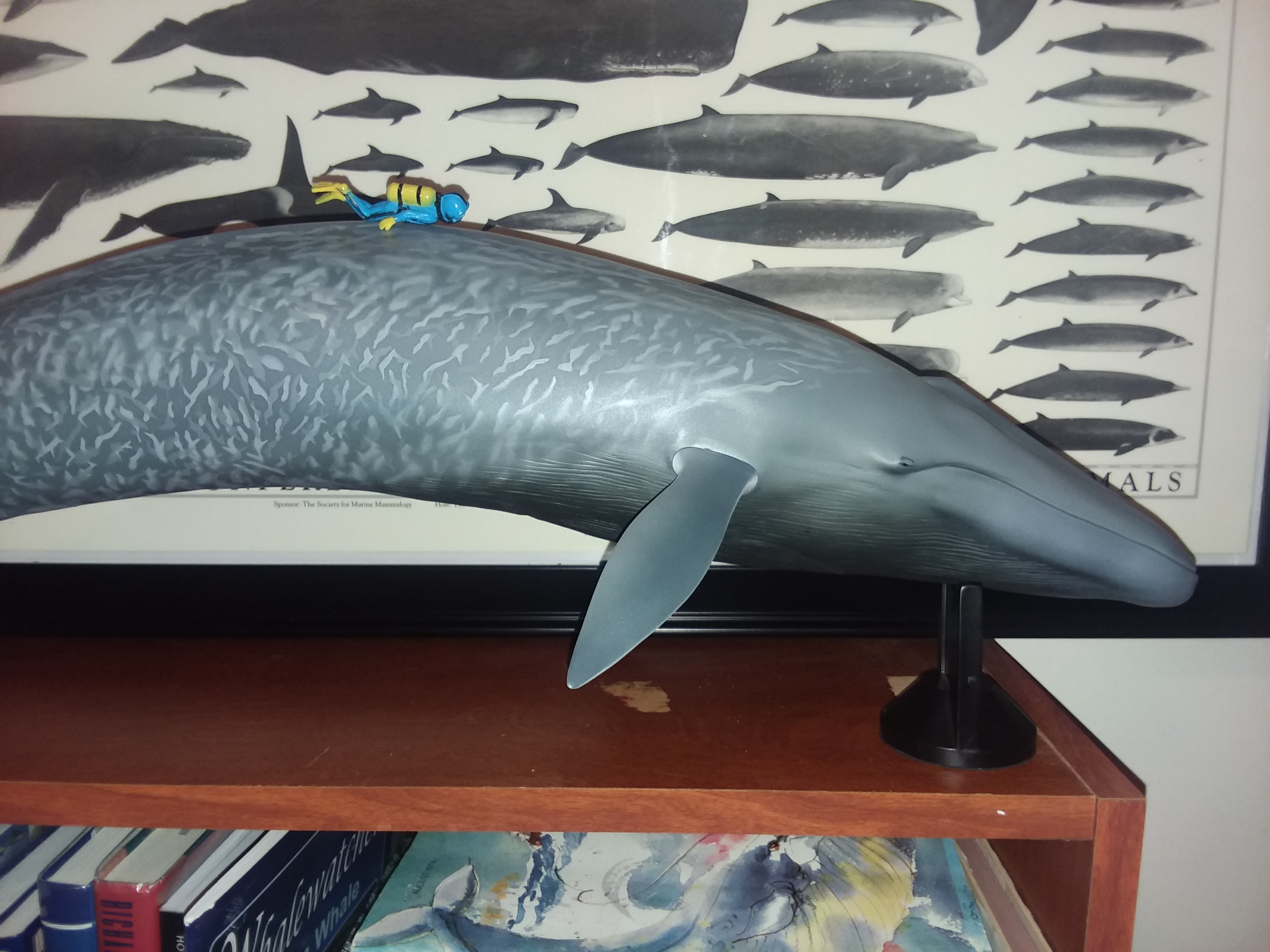
Introduction: Nomenclature and taxonomy
The blue whale was first scientifically described by Scottish naturalist, Robert Sibbald in 1692, based on his discription of a 23.79 meter (78-foot) specimen stranded in Firth of Forth (1). Thus one of its common names was the Sibbald’s rorqual. In 1758, Carl Linnaeus gave the blue whale its current scientific name, Balaenoptera musculus. The species name forms an amusing pun as the ”musculus” is derived from that latin term for ‘little mouse’, referring to how muscle movements under the skin resemble mice scurrying beneath a cloth. The blue whale was also known as the ”sulphur-bottom” by American whalers as diatom growth beneath the whale left a yellowish pigment. The blue whale’s current name was coined by Sven Royn, who developed the harpoon gun that finally allowed the whaling industry to hunt blue whales in the late 19th century (2). Along with being recognized as the largest animal in Earth’s history, it’s also among the most mysterious as we still know very little about this whale.
The blue whale is currently divided into five subspecies throughout the world (3). Blue whales of the Northern hemisphere (B.m. musculus) and the Antarctic (B.m. intermedia) were the first two to be divided based on their offset breeding seasons. Eventually, the blue whales of the Southern hemisphere became further delineated as a pygmy subspecies (B.m. brevicauda) was recognized in the 1960s by Dr. Tadayoshi Ichihara . The blue whales in the North Indian Ocean and Arabian sea (B.m.indica) are physically similar to pygmy blue whales, however, they breed asynchronously from other Southern hemisphere blue whales and possess distinct call types. The latest subspecies to be classified is the Chilean blue whale, which still remains scientifically unnamed. The Antarctic subspecies will be the greater focus of this topic, but the other subspecies will also be discussed.
How blue whales were measured
In both whaling and scientific practices, the standard method for measuring a whale’s total length is from the tip of its rostrum to the notch between its flukes. This method was adopted as the flukes themselves were often cut off to prevent drift as the whale was towed by whaling ships. The rostrum acts as the anterior endpoint because the jaw was rarely in its natural position when the body was placed on the flensing platform (4,5). This ‘total’ length is notably shorter than a whale’s ‘overall’ length from the tip of the flukes to the tip of the jaw. One blue whale that had an overall length of 29.0 meters/95 feet had a total length of 27.4 meters/90 feet.
When it comes to weight estimates, there exists no measuring of a blue whale in its entirety. Whales weighed in whole were smaller whales like beaked whales, minkes, and occasionally large sperm whales using either weighbridges or cranes (5,7,8). All data of blue whale weights were measured piecemeal using pressure cookers or dynamometers (9,10,11). The first piecemeal weighing was conducted in 1903 for a 23.7-meter blue whale that only weighed 63 metric tons (5,12). It was very laborious work and was done in very awful weather as many of them were specimens collected from the Antarctic. Furthermore, when the whales are flensed into pieces, most of their body fluids are lost, which may account for 5-8 percent of their total weight. When plotting these weights with the length of each whale, a whale’s weight can be predicted from its length by using a power function formula. However, for rorquals especially, the application of these formulae are limited, which will be discussed later.
How Big Is The Average Blue Whale?
The size of the typical blue whale varies greatly and depends on multiple factors. The most important of these is the subspecies. One of the key characters for separating the different subspecies of blue whales are differences in average length between the adult populations (4, 13,14). Along with measuring the whale’s length, scientific studies also measured the development of sexual organs and skeletons to determine the size at which blue whales attained sexual and physical maturity (15).
The most rigorously examined and well-established growth parameters are for the Antarctic blue whale. As newborns, Antarctic blue whales are about 7-8 meters long and weigh 2-3 metric tons (1,9,15). From the high-fat content of their mother’s milk, they grow at an astonishing rate to about 16 meters and gain about 17,000 kilograms (1,6,15). They achieve this size in only about 7 months from birth! At around 10 years old, Antarctic blue whales enter sexual maturity when females are about 23.4-23.7 meters long and males are 22.6 meters long (15,16). These values are known as the L50, the length where 50% of whales are sexually mature and 50% are immature. As they grow older, the vertebral column fuses, preventing further growth. On average, female Antarctic blue whales physically mature at over 26 meters and males at 25 meters (6,15). The average lengths of the overall adult population are 24.3 and 25.6 meters for males and females, respectively (14). These values are known as the Lmean. The maximum length for this subspecies is a matter of some controversy, but the more convincing whaling resources suggest 33.26 meters for females and 32.64 meters for males (1,5,16).
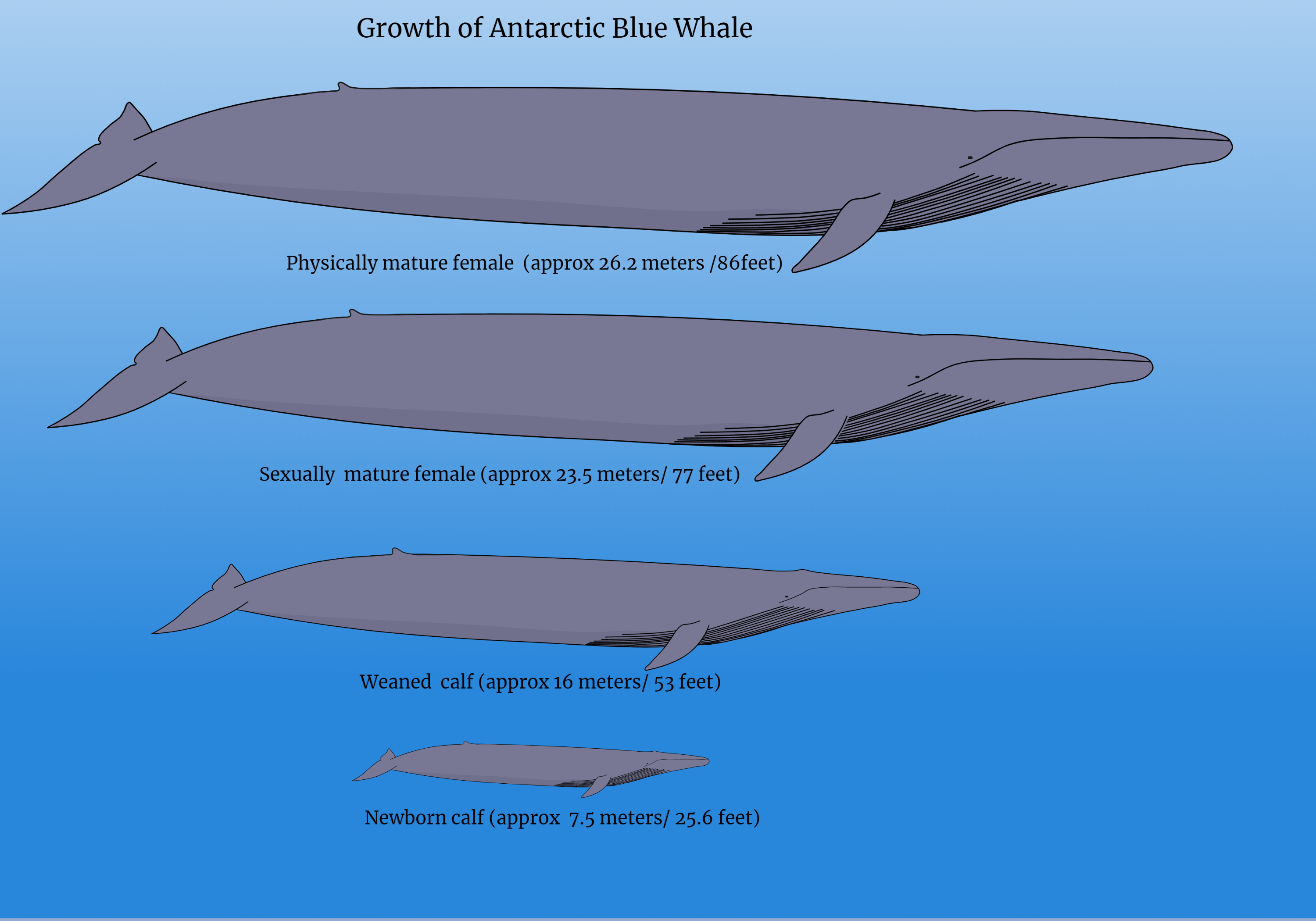
Pygmy blue whales, by contrast, are notably smaller. Newborns are about 5.6-5.8 meters long on average (9). Pygmy blue whales have L50 values of 18.6 meters and 19.2 meters for males and females, respectively (13,17). Male pygmy blue whales physically mature at 21.1 meters and females at 21.6-21.9 meters. The Lmean for the pygmy blue whale population is around 21.0 meters for females and likely about 20.3 for males. The maximum length for a pygmy blue whale is 24.2 meters for females and 23.8 for males (14,34). The physical traits of the North Indian blue whale are currently poorly distinguished from the pygmy blue whale. One study found the L50 of B.m.inidica to only be 0.5-0.6 meters shorter than that of the pygmy blue whale (17).
The growth parameters for the Chilean blue whale are less defined as this subspecies’ identification is very recent. Nonetheless, catch data from Chilean whaling stations tells us that the female Chilean blue whale’s Lmean is 23.5 meters (4). Using ratios between L50/Lmean for other blue whale subspecies allowed researchers to estimate the L50 for Chilean blue whales to be 21.3 meters for females and 20.50 meters for males (14). The largest within the catch data are about 24.9-25.6 meters (4,14).
Lastly, we have the Northern blue whale. I wasn’t able to find any published articles that discussed the L50 and size of physical maturity like the Southern hemisphere whales. The only sources I have are books, which estimate the L50 to either be 21.65-23 meters or 22-22.6 meters (1,18). The latter source suggests that Northern blue whales physically mature at 23.2 meters and 24.7 meters for males and females, respectively. It’s hard to judge these approximations as I haven’t seen the methodology used to arrive at these lengths. At the same time, these lengths seem reasonable since the Northern hemisphere blue whale’s Lmean seems to be around 24.1 meters for females (1,19).
(2/21/2022 UPDATE: I have recently discovered relevant data for the size parameters of North Pacific Blue whales from the Fisheries Research Board of Canada. Maturity studies conducted on whales captured from 1949-1955, found that North Pacific Blue whales enter sexual maturity at about 69 feet for males and 71 feet for females (30,31). The length and weight tables will be updated for the Northern subspecies to reflect these findings. A bulletin reported that males and females physically mature at 78-80 feet and 80-85 feet, respectively. The upper-ranges seem too close to that of their Antarctic counterparts given the big difference of their respective L50 values. This becomes even more apparent when considering that whales in excess of 85 feet are rare in the catch records for the North Pacific. I was not able to locate the original source cited for these specific lengths. Therefore, the currently-listed sizes at physical maturity will remain the same, as they’re closer to what I’d estimated from the L(physical maturity)/ L50 ratio of Antarctic blue whales.)
While the average length for Northern blue whales may not seem so different from the Chilean subspecies, their maximum lengths are far greater. Within the whaling record, the largest North Pacific blue whales were females ranging from 26.8-27.1 meters and the largest in the North Atlantic was 28.1 meters (5,20). Mounted blue whale skeletons up to 26.5 meters from the North Pacific and 27 meters from the North Atlantic corroborate that those reported lengths were accurate figures. This is especially true given that the flesh of the intact specimens would extend slightly beyond the length of their skeletons. The largest ever reliably measured in the Northern Hemisphere was a 29.8-meter female that was shot down with machine guns for blocking the Panama Canal in January of 1922 (1,5,15,21). I was initially doubtful of this claim, however, an analysis of the whale’s cervical vertebra validated that the whale was measured accurately. However, its unusual size leaves me curious on whether this is truly of the Northern populations or if it’s some wayward Antarctic blue whale.

Table 1
| Subspecies | L50 (meters) | Lmean (meters) | Length at physical maturity (meters) | Maximum length (meters) |
| Antarctic | 22.6 (males) 23.4-23.7 (females) | 24.3 (males) 25.6 (females) | 25 (males) >26 (females) | 32.64 (males) 33.27 (females) |
| Northern | 21.0 (males) 21.6 (Females) | 22.6*** (males) 24.1 (females) | 23.2 (males)* 24.7 (females)* | ~27.4 (males) 28.1 or 29.8 (females) |
| Pygmy/North Indian | 18.6 (males) 19.2 (females) | 20.3** (males) 21.0 (females) | 21.1 (males) 21.9 (females) | 23.8 (males) 24.2 (females) |
| Chilean | 20.50***(males) 21.3*** (females) | 22.10 (males) 22.6-23.5 (females) | N/A (Likely similar to Northern subspecies) | 23.4 (males) 24.9-25.6 (females) |
*Uncertain methodology
**Approximated based on Lmean/L50 ratio for female pygmy blue whales
***Calculated value based on L50/Lmean ratios of other subspecies
Now as for the weight of these creatures, it’s a little tricky. While sources like Lockyer and Mikhalev provide regression formulae to approximate the weight of a blue whale, they’re derived from samples where the blue whales are of varying body conditions (6,9,22). Blue whales, while not exactly as strict seasonal feeders as other mysticetes, still consume food at a much greater rate during the summer feeding season. For Antarctic blue whales, this extends from November to March. By the beginning of the feeding season, blue whales are at their lean weight, and they gain about 50% of their body weight back by the end (6). Most of that weight gain is muscle, with fat being the next-largest contributing tissue. So as you can imagine, this drastic fluctuation in weight of an individual makes it difficult to accurately predict the weight of a blue whale with length alone. Luckily, Lockyer went through the extra step and aligned her sample of piecemeal weighings with their capture dates, allowing her to separate the ‘fatten’ and lean whales of the same lengths. This enabled her to create two linear graphs that relate a blue whale’s total weight (exclusive of body fluids) with its skeletal weight. In their lean state, blue whales weigh about 4.66 times their skeleton, while ‘fatten’ whales are about 6.94 times their skeletal weight.
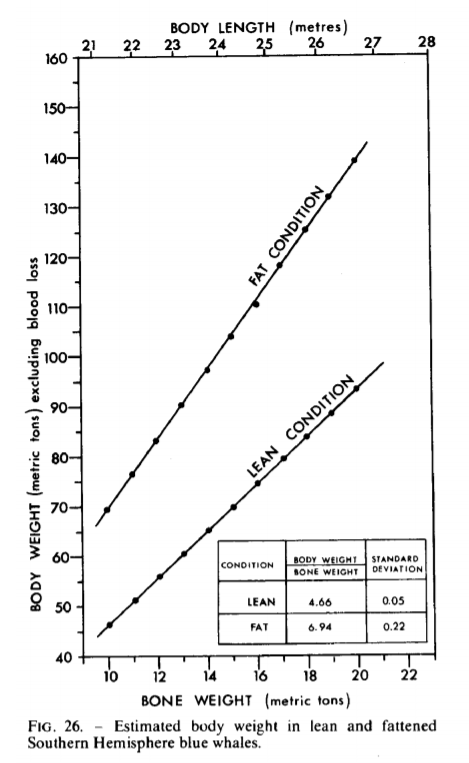
At their L50 lengths, Antarctic blue whales range from 63-93 metric tons for males and 71-106 metric tons for females. For the Lmean , males and females range from 79-118 metric tons and 91-136 metric tons, respectively. At physical maturity, males vary from 86-128 metric tons and females at 97-144 metric tons. I’ll also report that at physical maturity, a male would average 102 metric tons while females average 117 over the course of the year.
Ichihara, the scientist who described the pygmy subspecies, realized that pygmy blue whales are heavier than ordinary blue whales at equal lengths (13). While the meat, blubber, and skeletal weights were even, the internal organs were about 53% heavier between a pygmy blue whale and a regular blue whale of 22 meters. This is because pygmy blue whales physically mature at a smaller size, and thus, have more developed organs than the Antarctic subspecies.
To accommodate pygmy blue whales, I used the viscera weight from the corresponding the life stage. So for a female pygmy blue whale at L50, rather than using the viscera weight of a blue whale at 19.2 meters, I use the viscera weight of an blue whale at 23.4 meters.
Table 2
| Subspecies | Mass at L50 (tonnes) | Mass of Lmean (tonnes) | Mass at physical maturity (tonnes) | Mass at maximum length (tonnes) |
| Antarctic | 71-106 (females) 63-93 (males) | 91-136 (females) 79-118 (males) | 97-144 (females) 86-128 (males) | N/A (Likely exceeding 200) |
| Pygmy/North Indian | 36-54 (females) 35-53* (males) | 52-78 (females) 45-68 (males) | 60-90 (females) 53-79 (males) | 78-116 (females) 75-112 (males) |
| Chilean | 50-75 (females) 42-63 (males) | 67-99 (females) 58-86 (males) | N/A (Likely similar to Northern) | 91-136 (females) 70-104 (males) |
| Northern | 53-79 (females) 47-70 (males) | 77-115 (females) 63-93 (males) | 83-123 (females) 68-102 (males) | 116-172** 132-198*** (females) 109-162 (males) |
*based of skeletal weight of 6.40 tonnes from a 18.6 meter male pygmy blue whale
*Davis Strait whale
**Assuming skeleton of Panama whale is approx 26.8 metric tons.
This comparison is quite interesting to see. One thing I like is how even the pygmy blue whale by the end of the feeding season is still about as large as the largest sauropod species, with both sexes either approaching or surpassing 100 tonnes. You may notice that my estimates for the pygmy blue whale are smaller than what’s currently on Wikipedia. That’s because Wikipedia is using calculations from Lockyer’s regression for pygmy blue whales, which has a mere sample size of 5 that only ranges from about 16-21.8 meters and 20-70 tons. Naturally, it’s going to overestimate whales much greater than 23 meters, so I avoided using that formula.
What was the Biggest Blue Whale?
We’re now going to look at the record-breakers. The first one I want to get out of the way is the most recent size-record the blue whale broke: largest animal in fossil record.
In 2019, a fossilized skull of an anatomically-modern blue whale was recovered from Italy and is estimated to be about 1.37 million years old (23). The skull had a bizygomatic width of 294cm. When using formulae designed to reconstruct the length of fossil baleen whales, the estimated length ranged from 23.4-27.1 meters. However, estimations based off the known measurements of extant rorquals, including the blue whale, estimates it more consistently at 25.4-26.1 meters. This effectively means it was about the size of a physically-mature Antarctic blue whale and would easily average over 100 metric tons on the conservative end. No other fossil animal, even sauropods, approach a mass range such as that. I’m not sure how exactly this blue whale is related to modern populations, but if it’s a direct ancestor of the Northern subspecies, it’s on the relatively larger end.
Now, how big was the largest blue whale? There’s a debate concerning that as there’s reason to question the reliability of sources that were often cited in scientific literature. If you comb all the books and all the sources out there, you’re not going to quite get the same answer. Luckily, I did that for you and will provide a basic summary.
The canonically-cited largest blue whale was a female caught at Grytviken, South Georgia in 1909. This female measured 107 fot/Norwegian feet. This unit of measurement is actually slightly longer than an English foot (0.3138m vs 0.3048m), which meant the whale was 33.58 meters long (5,24,25,26). However, issues with whalers either misreporting the whale’s length, rounding, or using non-standard measuring techniques made certain experts wary of trusting the whaling record (2,4,5,10,25). Alternatively, some prefer to cite the largest blue whale measured directly by a scientist, which would be the 29.9-meter blue whale measured by Masaharu Nishiwaki in the 1946/1947 whaling season (18).
I generally choose to believe some of the whaling records, for specific reasons. The main reason is that while there has definitely been unreliability within catch length data from whaling records, the extent of falsification was contingent on the nationality of the whaling fleet, decade, and species (27,28). For example, catch-length data was heavily falsified for Japanese and Russian whaling fleets in the 1950s-1970s, especially for sperm whales. As far as issues with blue whales are concerned, it mainly applied to individuals that were below the minimum size quota enforced in 1937 (4,14,25). Individuals below the legal threshold of 21.3m were ”stretched” or reported as fin whales. This specific practice has never been shown to cause the ”stretching” of large blue whales, however, the opposite has been noted to occur. Ironically, whale-stretching involved shortening the reported length of larger sperm whales so that the catch length distributions stayed consistent with production yields.
There are also concerns on whalers not using the zoological standard for measuring whales, which has been observed (1,4,15). For this reason, I cautiously disregard the 33.58-meter whale, since not much is documented about how it was measured. Sigurd Risting also published that two whales were killed in March 1926 in South Shetlands: a 106 fot/33.26 meter female and a 104-fot/ 32.64 meter male (1,5,6,26). The largest whales were quite rare, as only 5 whales out of the entire sample exceeded 100 fot/31.4-meters.
Even when accounting for the lack of precision for individuals measured during the 1920s , it’s very likely that at least some of the largest whales recorded from the 1930/31 season onward were accurately measured. Of these whales, the largest has been recorded to reach up to 31.1m in length. All of these whales were from the Southern Hemisphere and none of the other regions show records beyond their scientifically-recognized maximums.
The largest sample directly measured by scientists were by the Discovery Committee, which only ranged up to 28.5 meters for females and 26.5 meters for males (5,10,15). This led some experts to doubt Risting’s data. The Discovery Committee’s sample was certainly sufficient for illustrating how blue whales over 28-meters are exceptional, but even Nishiwaki’s 29.9m specimen shows that the Discovery’s measurements shouldn’t be strictly-adhered to when assessing the maximum sizes for Antarctic blue whales.
In my opinion, whaling data became more accurate after the early 1930s, where the largest whales consistently measured between 100-102 ft.
The Heaviest Blue whale to be weighed
Now as for the largest whales ever weighed, you may have read about 3 figures thrown around a lot for the blue whale’s maximum weight: 150 tons, 180 metric tons, and 190 metric tons. While there’s not as much debate regarding the validity of weighings as there is for reported lengths, I do occasionally see literature switching between each of these figures as the most valid estimate. I’m going to explain the sources behind each figure.
The most common one I’ve seen was a 27.1-meter whale measured by Japanese whalers and documented by Lt. Col. Waldon C Winston on January 27, 1948 (1,5,6, 11,18,22,26,28). This whale weighed 127.5 metric tons exclusive of body fluids, with 136.4 tonnes/ 150 short tons being the final tally when accounting for the lost fluids composing 6.5% of the intact body weight. Winston provided a complete tabulation of the whale’s tissue content towards the total weight. This figure was highly favorable to scientific sources (29). The skeleton weighed 18.59 tonnes, meaning the total-weight: bone-weight ratio was 6.86. This whale was very well fed as it was approaching its maximum mass for the austral summer. This figure, however, falls short for providing a reference of the largest blue whale as it was nowhere near the maximum length.
The 180-tonne whale is probably the most obscure of the three. This specimen was a 29.5-meter blue whale taken in by the Messrs Southern Whaling and Sealing Company and was weighed by chemist R. Squire in 1931 (12,24). Instead of small scales, this whale was weighed from pressure cookers. The whale was originally reported to have a piecemeal weight of 163.7 short tons and a complete weight of 174 short tons when accounting for fluid loss. However, Victor B. Scheffer, when calculating the total weight, mentioned there was an error in the reporting. Scheffer cites that the whale actually weighed 163.7 imperial long tons, which are actually heavier than metric tons. This meant the whale weighed about 178 metric tons/ 196 short tons while alive. However, I have noticed one source incorrectly state the whale was 196 long tons/ 199 metric tons (24,25). This unfortunately carried over to Wikipedia. This was the longest whale to have its weight reported, but not the heaviest.
The 190-metric ton blue whale was a 27.6-meter blue whale that was caught by the Soviet whaleship, Slava, on March 20, 1947 (1,5,22,26). I generally see this source cited a lot, and not many contest it. Nonetheless, I do see why some find it questionable. This whale only has about two-thirds of the tissue weight accounted for. All we have is 26 tonnes for the skeleton, 30 for the blubber, 66 for the flesh, 4.3 for the tongue, 0.98 for the liver, 0.7 for the heart, and 1.4 for the lungs. That’s about 129 metric tons for the individual tissue types.
It seems that the blubber was only partially reported for this specimen as 30 tonnes would be far too low given the whale’s reported diameter of 4-meters and maximum blubber thickness at 42cm, which exceeds the range reported near the dorsal fin in other literature. This directly indicates that the whale was of exceptional condition. Authors defined ”blubber” inconsistently, in this case it can be easily assumed the 30 tonnes refers only to the blubber found along the flanks and body, which comprises about 40-44% of the pooled weight of all blubber tissue.
Scaled from a 25.3m/83-foot pregnant female (6) would predict a blubber weight of 57.4 tonnes, but it’s unlikely to be in the same exceptional condition as Voronin’s. Using percentages I provide about would suggest that pooled blubber weight for Voronin’s whale was about 70 tonnes. Since the GI tract and visceral fat would realistically amount to another 10 tonnes, that places the weight to about 180 tonnes without corrections for other organs, the baleen , and estimated blood.
Estimated Tabulation of Slava’s 190-tonne Whale
| Component | Mass (tonnes) |
| Skeleton | 26.00 |
| Muscle | 66.00 |
| Blubber Total | 70 |
| Internal Organs | 23.68 |
| Heart | 0.7 |
| Lungs | 1.40 |
| Tongue | 4.30 |
| Liver | 0.98 |
| GI-Tract (Stomach+Intestines) & Visceral fat | 10.0 |
| Total | 180 |
While this whale may seem unusually heavy for its length, like I mentioned before, there can be a lot of heterogeneity in the individual morphology of blue whales. Multiple sources recognize the largest oil yield from a blue whale to have come from a 27.7-meter whale caught on Walvis Bay, South Africa on July 13th, 1924 (1,5,10,15,16) . This whale yielded about 305 barrels of oil, which would weigh roughly 50 metric tons. Considering how the oil yield typically accounts for about 24% of the whale’s body weight (6), this likely meant the whale would’ve conservatively weighed similarly to the whale caught by the Slava. However, blue whales of this weight are more likely to be around 30 meters long.
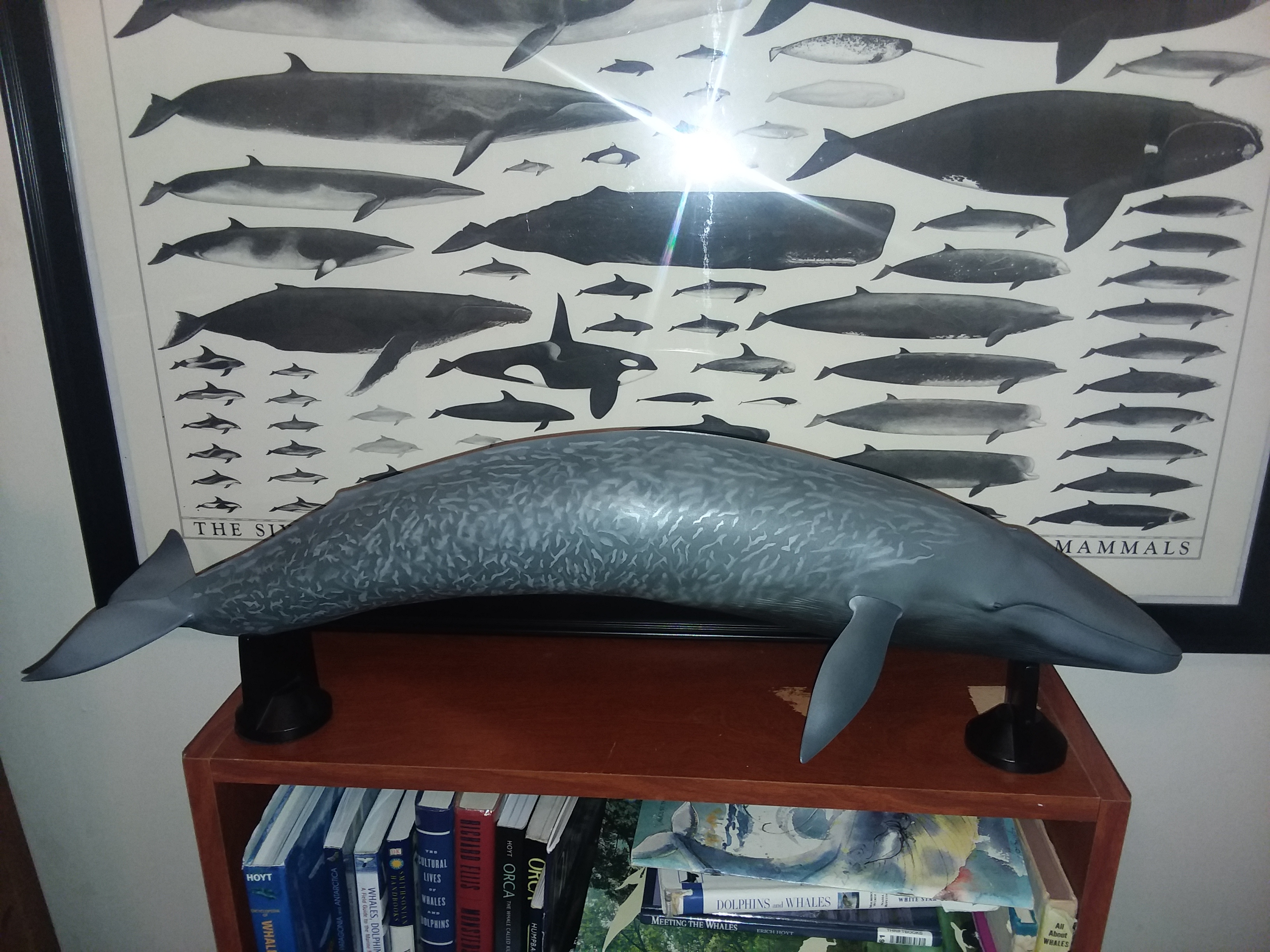
S
References
1.Tomilin, A. G. 1957. Cetacea. Mammals of the U.S.S.R. and adjacent countries. Volume 9. Akademii Nauk SSSR, Moskow (translated by the Israel Program for Scientific Translations, Jerusalem, 1967, 717 pp.).
2. Bortolotti, D. (2008). Wild Blue: A Natural History of the World’s Largest Animal. New York: St. Martin’s Press.
3.Carwardine, M. (202o). The Handbook of Whales, Dolphins and Porpoises of the World. Princeton, New Jersey: Princeton University Press.
15. Mackintosh, N. A., & Wheeler, J. F. G. (1929). Southern Blue and Fin Whales. Discovery Reports, 1, 257–540.
16. S. Risting, “Whales and Whale Foetuses: Statistics of Catch and Measurements Collected from the Norwegian Whalers’ Association 1922–1925,” Rapports et Procès-Verbaux des Réunions 50 (1928): 1–122.
17. Branch, T. A., & Mikhalev, Y. A. (2008). Regional differences in length at sexual maturity for female blue whales based on recovered Soviet whaling data. Marine Mammal Science, 24(3), 690–703. https://doi.org/10.1111/j.1748-7692.2008.00214.x
18. Marine Mammals of Eastern North Pacific and Arctic Waters. (1986). United States: Pacific Search Press.
20.Reeves, R., Clapham, P., Brownell, R., & Silber, G. (1998). Recovery Plan for The Blue Whale (Balaenoptera musculus).
21. Harmer, S. F. (1923). 55. Cervical Vertebrae of a Gigantic Blue Whale from Panama. Proceedings of the Zoological Society of London, 1923, 1085–1089. https://doi.org/10.1111/j.1096-3642.1923.tb02223.x
22. Lockyer, Christina. (1976). Body weight of some species of large whales. Ices Journal of Marine Science – ICES J MAR SCI. 36. 259-273. 10.1093/icesjms/36.3.259
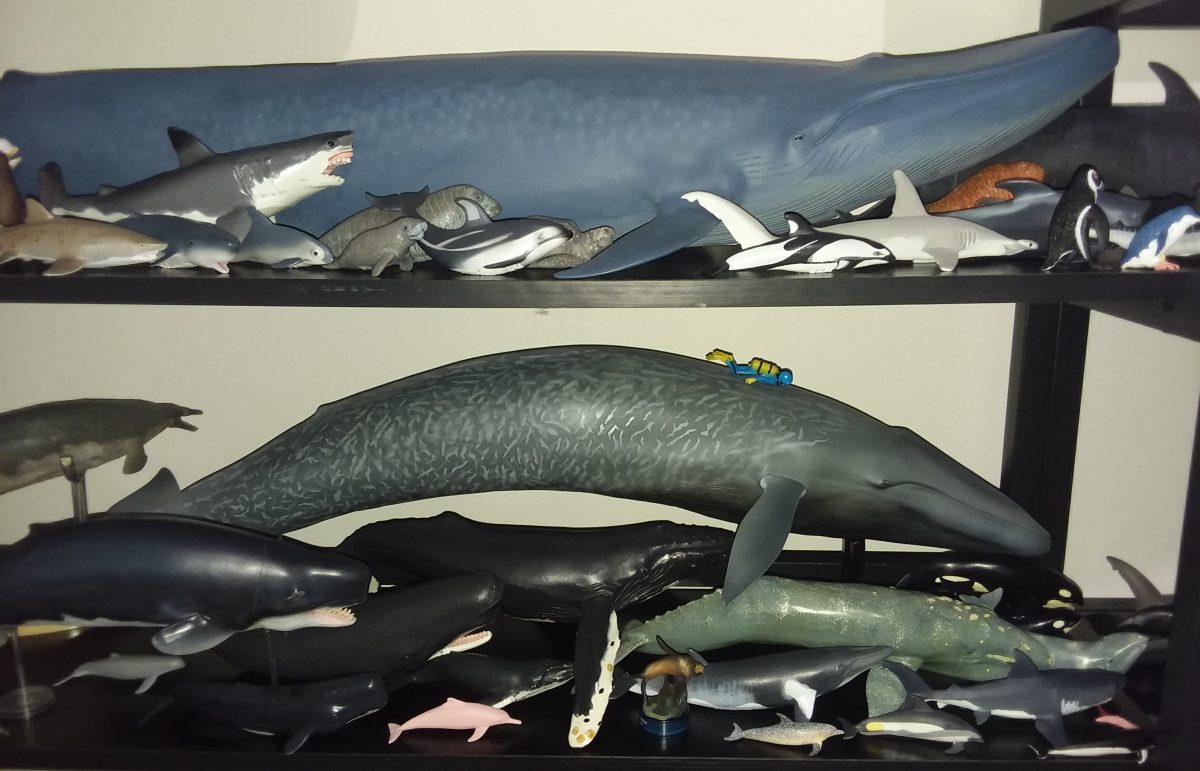

One thought on “The Blue whale: Putting the largest animal under the microscope.”